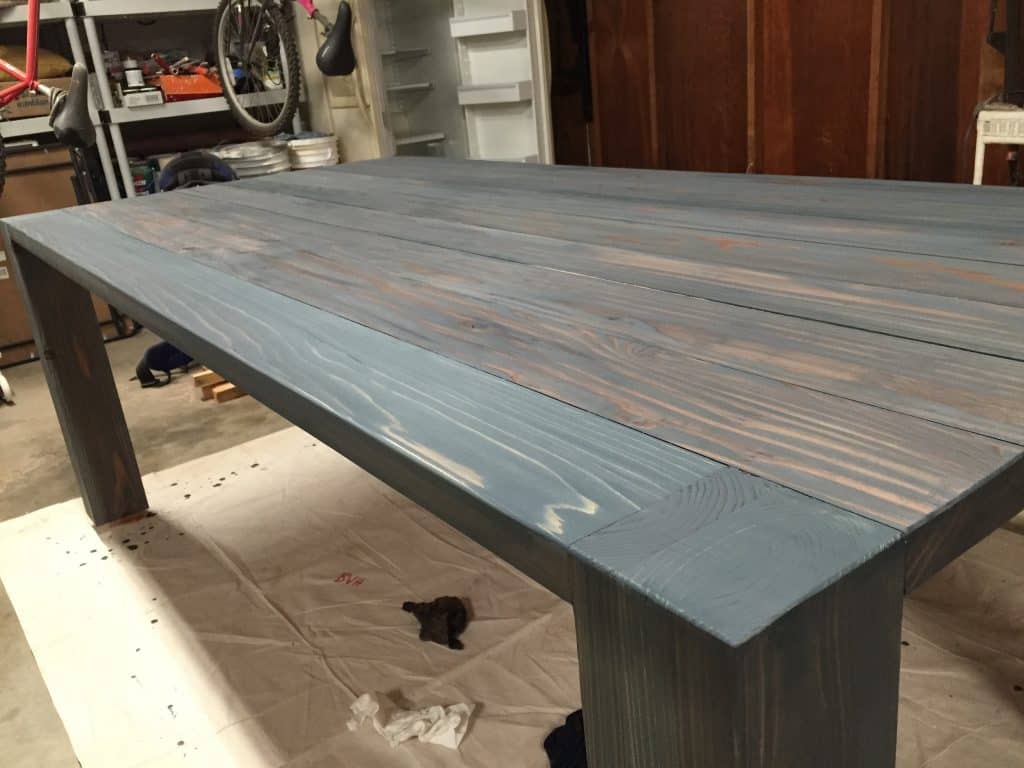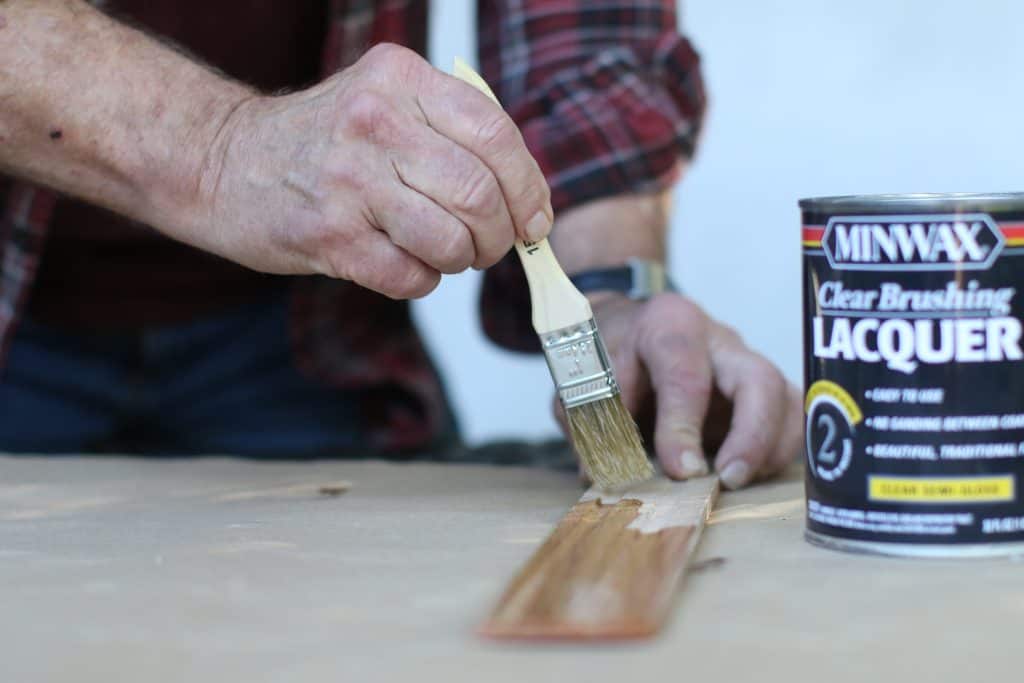When doing woodwork, you want to put a protective finish on the top. Many people prefer a clear topcoat that protects the wood and gives it a high-gloss look. Varnish and lacquer are two common finishes that give your wood a shiny, glossy finish.
When applied, it can be difficult to determine between the two, as they both go on clear and shiny. But lacquer has more durability, so it’s often used on items that are frequently used. A varnish is better for the outdoors.
In this article, we’re going to compare varnish and lacquer. We’ll look at how these two finishes are the same and the differences. We’ll also talk about when to choose each finish.
Contents
Lacquer and Varnish Wood Finishes
Both varnish and lacquer produce a glossy, durable finish to wood surfaces. You can use either of these products to give your furniture a shiny look and protection from water and damage.

Varnish goes on as a clear topcoat that acts as a protective film around the top of your wood. This finish will highlight the natural grain of your wood without changing the color. The varnish isn’t just suitable for protecting against water and hits, but also from UV rays.
The varnish is made up of resins, oils, and thinners, which are sometimes a solvent type. When the varnish dries, it hardens into a thick, translucent layer. Varnish can come in a semi-gloss or satin sheen.
Lacquer is a solvent based, synthetic coating, so it gives your wood a high-gloss look. Most lacquer contains shellac and alcohol, which bind together to make a durable protective film around the wood. Lacquer can also contain pigments, which change your wood’s color.
Lacquer is thinner compared to varnish, but it’s also stronger. This synthetic coating can protect against water, slight impacts, alkali, and acid. But it does not protect from UV rays. You can get lacquer as a type of matte or gloss.
Lacquer vs Varnish
Once dry, many people would have difficulty determining whether the craftsman used a varnish or lacquer to seal the wood.
Both finishes share similarities and differences that make them ideal for specific jobs. Let’s take a look at these factors.
Similarities
Varnish and lacquer can both give your wood a shiny, glossy finish. You can use either of these products so that your wood has a nice thick clear topcoat.

And both finishes offer some protection against water damage and wear and tear. Giving your wood a coat of varnish or lacquer will mean your product will last longer than if you don’t give it a proper coating.
Differences
One difference between varnish and lacquer is that lacquer is a more versatile product that is more durable than varnish. Your product will withstand more damages of time while using lacquer instead of varnish.
Another difference between varnish and lacquer is the application process. You apply lacquer as a spray, but you need to do so in a well-ventilated area as the fumes are harmful. Lacquer dries quicker than varnish, which is appealing.
Varnish is easier to apply using a natural bristle paint brush or a soft, lint-free cloth. You have to use care when applying varnish so you don’t end up with streaks. You also have to keep the surface clean so you don’t get blemishes and ruin the smooth finish.
Both finishes are difficult to remove. You can remove varnish from the wood surface, but the process is different than removing lacquer from wood.
Major Distinguishing Factor
The most significant difference that you should consider when choosing between varnish and lacquer is your item’s use.
For wood surfaces that will see a lot of use, such as doors or cabinets, you’d do better using a lacquer. But if your wood gets exposed to sunlight and frequent water, you may prefer a varnish finish instead of lacquer.
The final look will also play a role in which finish to use. If you want a flatter look, you will do better choosing a lacquer, although it can also be glossy. And because lacquer is solvent based, it can contain pigments that create a colored synthetic coating. Varnishes are typically high-gloss, semi-gloss, or satin sheen.

When to Use Lacquer
Lacquer contains shellac, a good choice for surfaces that will take on a lot of damage, such as doors, dressers, and other furniture and tables. You want to use lacquer because it holds up better to things like spills, bumps, hits, and acid.
Lacquer prevents water rings from drink condensation, chips to the wood, and discoloration in case of spills. But lacquer does not offer UV ray protection, so it’s not ideal for outdoors.
If you want to change your wood’s color or the sealing layer’s opaqueness, you can find polyurethane lacquers with color pigments.
When to Use Varnish
Varnishes are typically clear, so they bring out the wood’s natural grains without changing the wood’s permanent color. The varnish is often used over the top of stained or painted wood to preserve its look.
Varnish can protect your wood from water, and it can strengthen your wood so it can survive impact and storms. Varnish also offers UV protection, making it an excellent product for outdoor use, such as on your fences or house.
If you’re restoring a piece of antique furniture that will be more decorative than functional, you can use varnish as your protective finish.
Which is Better? Final Verdict
Both varnish and lacquer are useful finishes to put on wood to provide a clear, protective glossy finish. Where you plan to use your wood item will determine which type of finish you should use. You should use varnish for wood pieces outdoors and lacquer if you need a more durable protective layer.